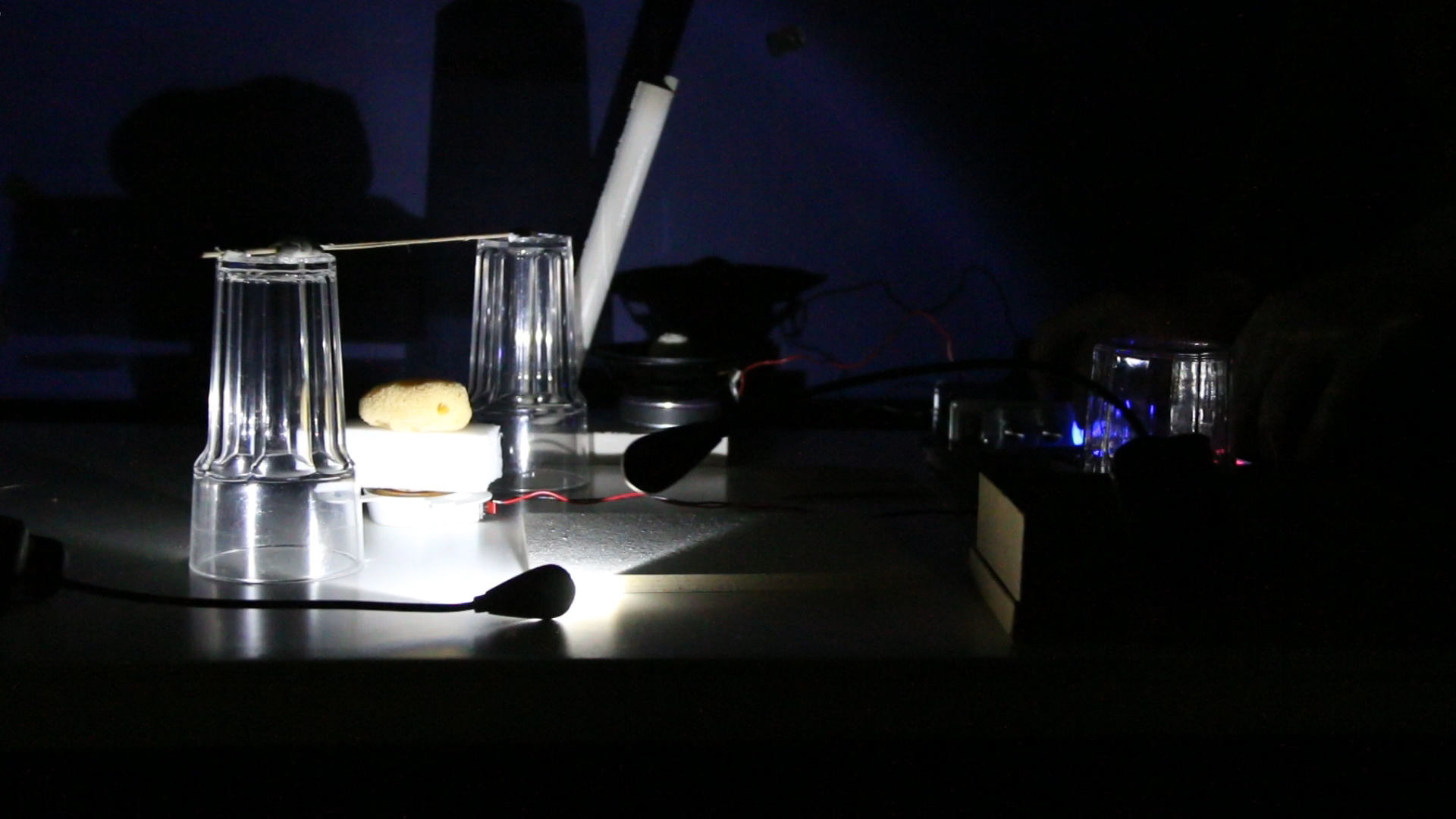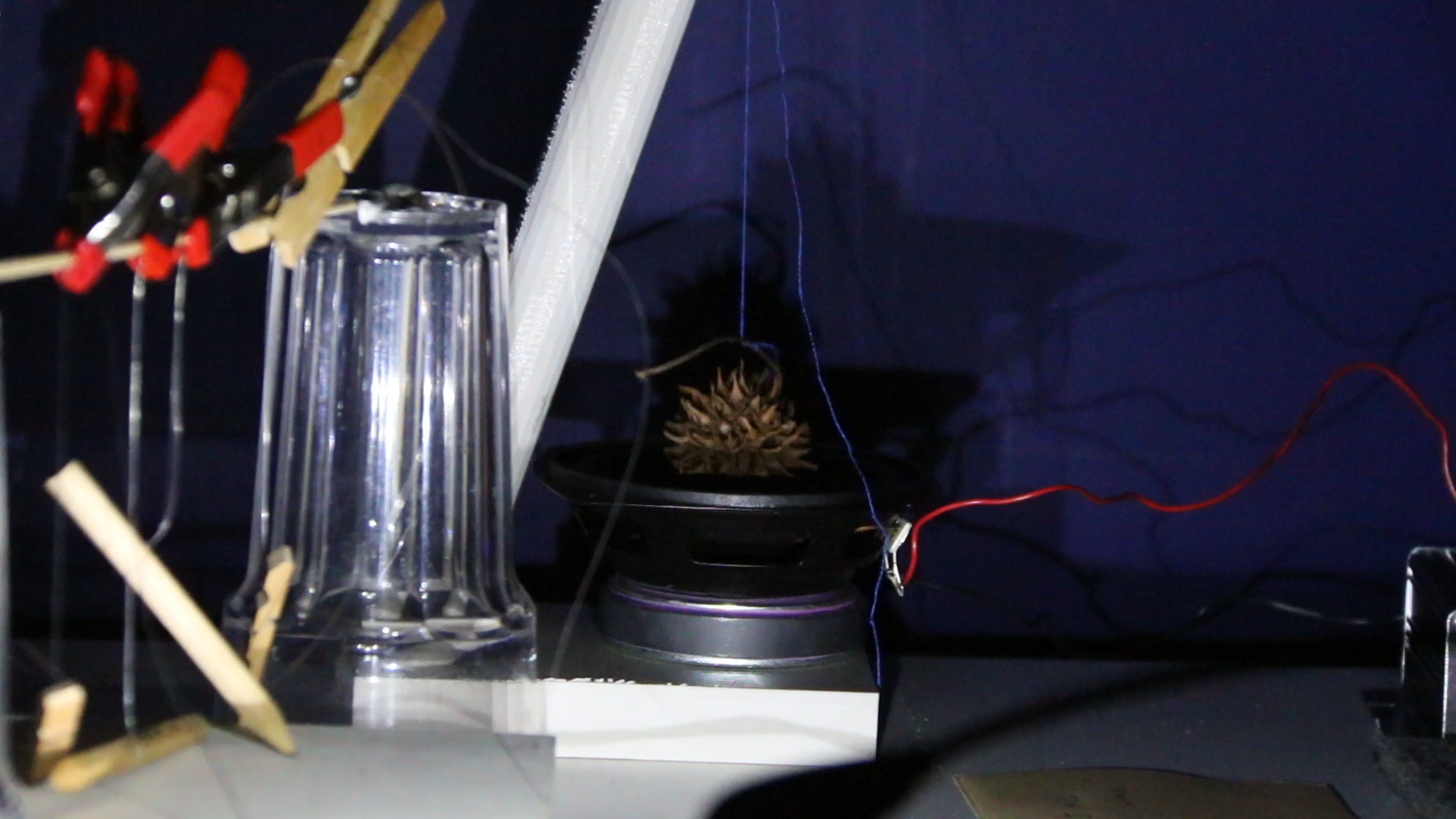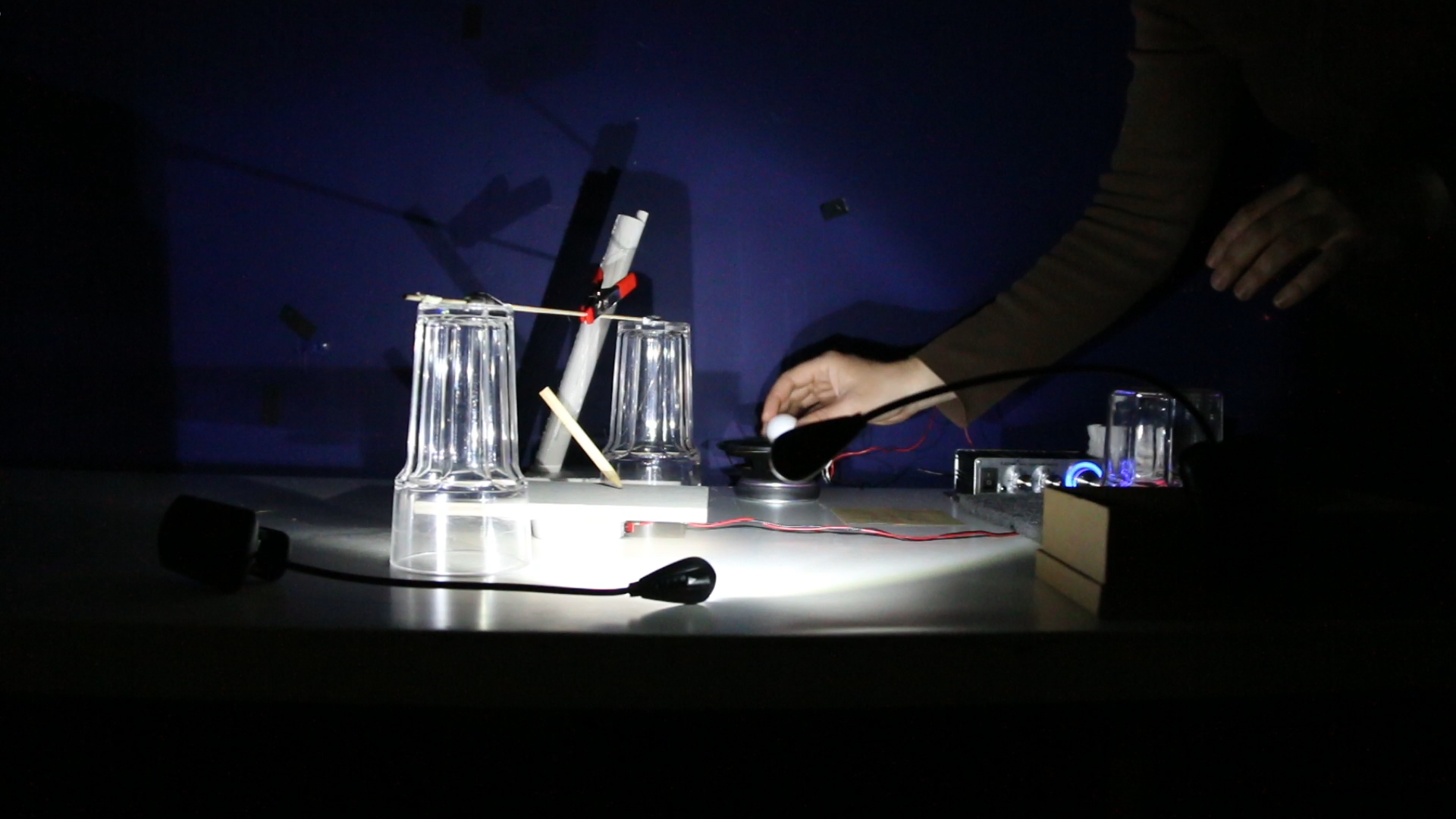“I touch what I cannot quite reach…” for performers, kinetic sound objects & shadows | 2-4 Performers (2019) 10-20 minutes. Version for violin, cello, kinetic sound objects & shadow boxes | (2021)
Concept and Design: Heather Frasch | Production Assistant: Jason Bennett
US Premiere by A.pe.ri.od.ic Ensemble, Portrait Concert. Chicago IL April 2019
European Premiere by Quiet Music Ensemble, Kilkenny Arts Festival, Ireland August 2019
Performance Notes: The piece begins in darkness. Performers carefully set delicate sonic objects into motion, which then move independently. With minimal manipulations through amplitude control, the performers slightly alter and vary the objects’ sounding results. The piece moves through four categories of materials. Performers create a detailed blending among materials by lingering in an environment while materials slowly transform from pitch to noise to silence. The mechanics and electronics are contained inside of wooden boxes. The objects are hidden behind rice paper lids so that, when illuminated, the micro-motions of the kinetic objects and activities of the performers’ hands are amplified. The hidden presence of the electronics inside wooden boxes creates a surreal analogue feeling of the electronic devices.
About: The intention behind the blurring of the vibrational objects through shadows is to create a post-human perspective of the performative materials. This post-human focus is influenced by the writings of Janne Bennett’s theory of Vibrant Matter, and other post-human theorists, speculative realists and object oriented ontologists, whose theories remove the human from the center of the narrative. By removing the focus on the context and potential symbolism of the object, viewers can become in-tune to the agency of the materials. For example: instead of looking at a pencil during the performance and relating to their own narrative, history and connection to ‘pencils’, instead, through ‘blurring’, audience members can focus on the activity of the pencils — its' independent ‘thingness’.
Stillness and slow changes are especially important when manipulating these sculptures so that sonic changes can be manifested as the materials heat up and vibrational patterns are altered. There is an instability, and at the same time, freedom with, the openness of the score. The form of the composition is developed by performing the most to the least stable object.
The piece fades into sonic silence, while physical movements continue. At this moment the blurring quality allows for a notion of imagined sounds in non-cochlear music to come alive, by underscoring the connection among all vibrating materials — sounding and non-sounding. Vibrational shadow play is at the center of the inner life of the objects. The ‘loudness’ of the un- sounding material underscores the moving vibrations within all materials.
Technology: Inaudible sine tones, transducers, kinetic objects (vibrating surfaces & moving objects) & 2 LED lights
Video from European Premiere: Kilkenny Arts Festival 2019. Binaural Recording.
Video Excerpt: From Dress Rehearsal, Cork, Ireland Aug 2019.
The Shadow Boxes are designed to contain the electronics which included transducers, amplifiers and sine tone generators. During the piece the performers play inaudible sine tones which set surfaces and the dangling objects into motion.
The lids of the boxes are removed and replaced with semi-transparent rice paper which allow the minute motions of the kinetic sound objects to be revealed to the audience. There are two light sources in the boxes so the performers can play with the degrees of clarity to blurriness from the kinetic objectss.
(Images of the Kinetic Sculptures that are Inside the Shadow Boxes from solo performance “Borrowed Words”)
View from the Inside








